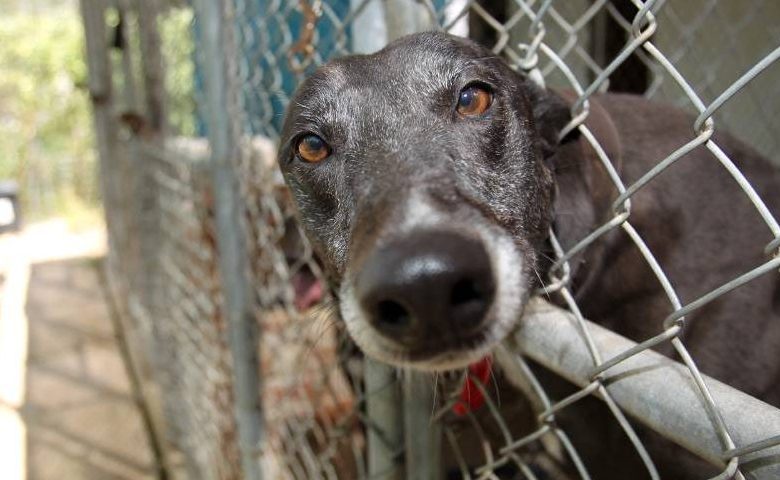Many greyhounds do not know how to play with toys as adults as they do not get the opportunity to learn as youngsters. Playing with puppies and allowing them to chase toys constructively can prevent a greyhound from learning to chase a prey animal as they have an alternative behaviour that still gives them a feel-good factor. A good recall is essential to distract your dog from an opportunity to chase something that they should not. Recall training has to be really fun and rewarding to stand any chance of competing against natural instinct.
Puzzle feeders can provide good enrichment and can make mealtimes last longer. Many designs on the market encourage your dog to use their nose or paws to dispense treats to them. If the device does not provide the treat quickly enough, some dogs will give up as it is too much like hard work. The treat inside may need to be of higher value to motivate your dog to try to work the puzzle out. Dogs that were deprived when young do not find it easy to express exploratory behaviour around new things and need lots of encouragement.
An item such as a sock or a cardboard tube with food hidden inside can create a spark of interest in enjoying toy play. All you need is a smart – toy play that can be gradually built up as the dog gets the idea. A lot of verbal praise and encouragement when your dog looks at, sniffs at or paws at the play item so that they get lots of attention for interacting or showing any interest. If you engage with the toy, moving it around, not shoving it in the dog’s face, sooner or later, your dog will wonder what the excitement is about and will investigate further. Be very enthusiastic when they do come forward of their own accord. A few seconds or minutes will improve over time as long as the game is rewarding to them.
The toy may need to be presented to the dog on several occasions until they get the idea, so do not give up just because the dog does not respond straight away. If your dog is elderly or injured, they do not have to be running around to benefit from toy play. A few minutes a day spent as quality time with you can be very rewarding for both parties. Cardboard boxes with treats underneath can be set up as a quiet game and not too exciting or energetic.
For active dogs, a chasing game can be encouraged with the dog’s most popular toy, something squeaky. You need two of the same toy so that you can encourage your dog to bring back the first toy and trade for the second, the more the dog realises that they will get another toy and the game isn’t over, they will give up the toy more readily, preventing possessiveness. You are also improving your recall and having fun together. A squeaker in your pocket can help to get your dog’s attention when distracted out on a walk. Furry and fluffy toys come in a close second place to favourite toys; picking up various textures of items helps with bite inhibition so that they do not grab so hard. Chasing tennis balls or frisbees can provide good exercise and feel good factor for the dog.
Play is an alternative form of instinctive hunting behaviour that fills an innate need for the dog without unnecessary focus on another (smaller) animal and upsetting other people. Behaviours that cannot be expressed naturally result in frustration for the dog, and problem behaviours can develop. Practice in your garden or a safely enclosed area. Work with one dog at a time, as the level of excitement increases with more dogs and can provoke too much rough play between them. Playtime is quality, bonding time between the handler and their dog. Have fun and play, play, play!
Last modified: November 18, 2023




